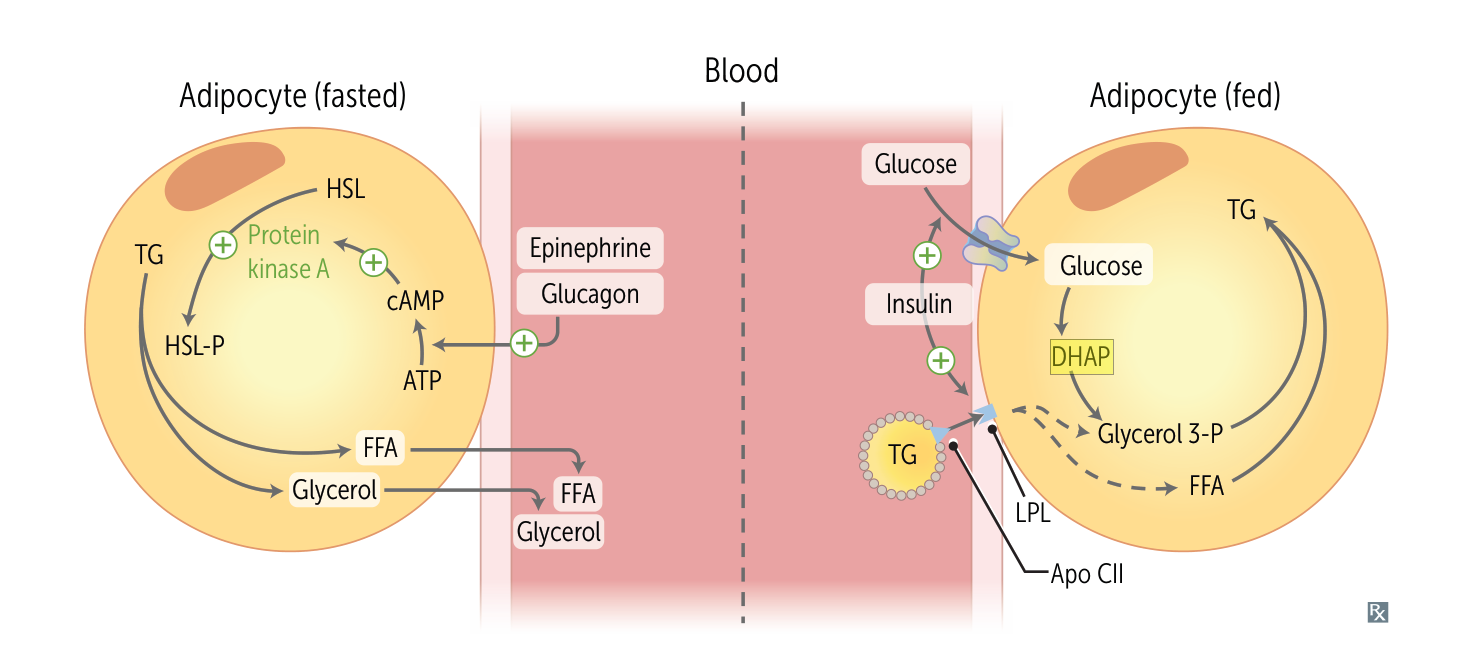
- Primary Site: Liver (major contributor). Also kidney cortex (minor).
- Cellular Location: Occurs in both mitochondria and cytoplasm.
Tip
GTP is from TCA cycle: Succinyl-CoA → Succinate
Primary substrates
- Glucogenic amino acids: Generated from the hydrolysis of protein tissue (typically during fasting > 1 week), these amino acids are capable of being converted to α-keto acids (e.g., oxaloacetate, α-ketoglutarate) and then to glucose.
- Lactate: Via the Cori cycle, lactate produced from anaerobic glycolysis (mostly in skeletal muscle) is shuttled to the liver, where it is converted to pyruvate, which serves as the first true substrate in gluconeogenesis.
- Propionyl-CoA
- Formed from odd-chain fatty acid β-oxidation, this molecule can be carboxylated to form succinyl-CoA. Succinyl-CoA can enter the gluconeogenesis pathway after being converted to oxaloacetate via the TCA cycle.
- Even-chain fatty acids can only be oxidized to acetyl-CoA, so they cannot be used for gluconeogenesis.
- Glycerol 3-phosphate:
- Released into the blood during hydrolysis of triacylglycerols in adipose tissue

- Phosphorylated by glycerol kinase in the liver
- Oxidized by glycerol phosphate dehydrogenase to dihydroxyacetone phosphate (an intermediate of glycolysis)
- Released into the blood during hydrolysis of triacylglycerols in adipose tissue